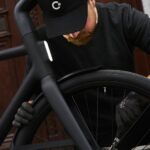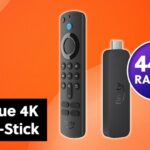Samsung has announced the ISOCELL HP1, the first 200MP photo sensor for smartphones, since last fall. But it did not reach the S22 Ultra team, with hopes shifting to the successor to the Galaxy S23 Ultra.
As with the first Samsung 108MP sensor, the photo performance of the first 200MP sensor turned out to be less stellar, with extremely small pixels capturing enough light to deliver the promised details only in ideal conditions. lighting, under the clear sky of summer days. The rest of the time, cameras with fewer megapixels proved to be more efficient in delivering superior image quality, attempts to compensate for this shortcoming using technologies such as Pixel Binning and software optimizations quickly reaching insurmountable limits.
Returning to the ISOCELL HP1, the first 200MP photo sensor seems to have been developed by Samsung only as a product for sale to smartphone makers caught in the megapixel race, with no real intentions to set a new performance standard. As proof, ISOCELL HP1 was not included in the equipment of any top Samsung phone.
According to Samsung’s specifications, the ISOCELL HP1 uses 0.64 μm pixels and includes a low-light mode that delivers high quality pictures at 12.5MP resolution, simulating a pixel size of 2.56 μm, with much increased sensitivity to light. At the same time, Samsung also announced a new technology called ChameleonCell, in fact, a configurable pixel-binning implementation, supporting 2 × 2, 4 × 4 or native resolution modes, depending on the ambient lighting conditions. Thus, in the “lowest” mode, the ISOCELL HP1 can group 16 adjacent pixels to make it easier to take pictures in artificial light, or even at night. As for the shooting modes, the ISOCELL HP1 supports up to 8K / 30fps resolution, but is rather intended for 4K mode, being able to shoot at 60fps, the 200 million pixel sensor leaving considerable margins to compensate for involuntary hand movements, applying optical stabilization, digital, or hybrid.
Moving into the not-too-distant future, the “true” 200MP photo sensor could be ISOCELL HP3, industry sources say Samsung is its main customer, with up to 70% of production being reserved for future Galaxy phone models in time. what 30% will reach privileged OEM partners, willing to pay the price demanded by the South Korean manufacturer.
For now, it’s too early to talk about the specifications of ISOCELL HP3, but as this is most likely just an improved version of the current HP1, it will probably not change much in the data sheet, the differences being observed especially in terms of performance.

 What’s happening with AI? Researcher explains why you can look forward to more creative NPCs, competition for ChatGPT and hot dog tomatoes
What’s happening with AI? Researcher explains why you can look forward to more creative NPCs, competition for ChatGPT and hot dog tomatoes Cowboy launches new on-demand service: That’s what’s inside
Cowboy launches new on-demand service: That’s what’s inside The new 4K Fire TV stick is now brutally reduced and transforms your old television into a smart TV
The new 4K Fire TV stick is now brutally reduced and transforms your old television into a smart TV The best mouse I’ve ever had, convinces me for gaming, work and home office and is different than all its predecessors!
The best mouse I’ve ever had, convinces me for gaming, work and home office and is different than all its predecessors! The first smart glasses suitable for everyday use that you can buy
The first smart glasses suitable for everyday use that you can buy